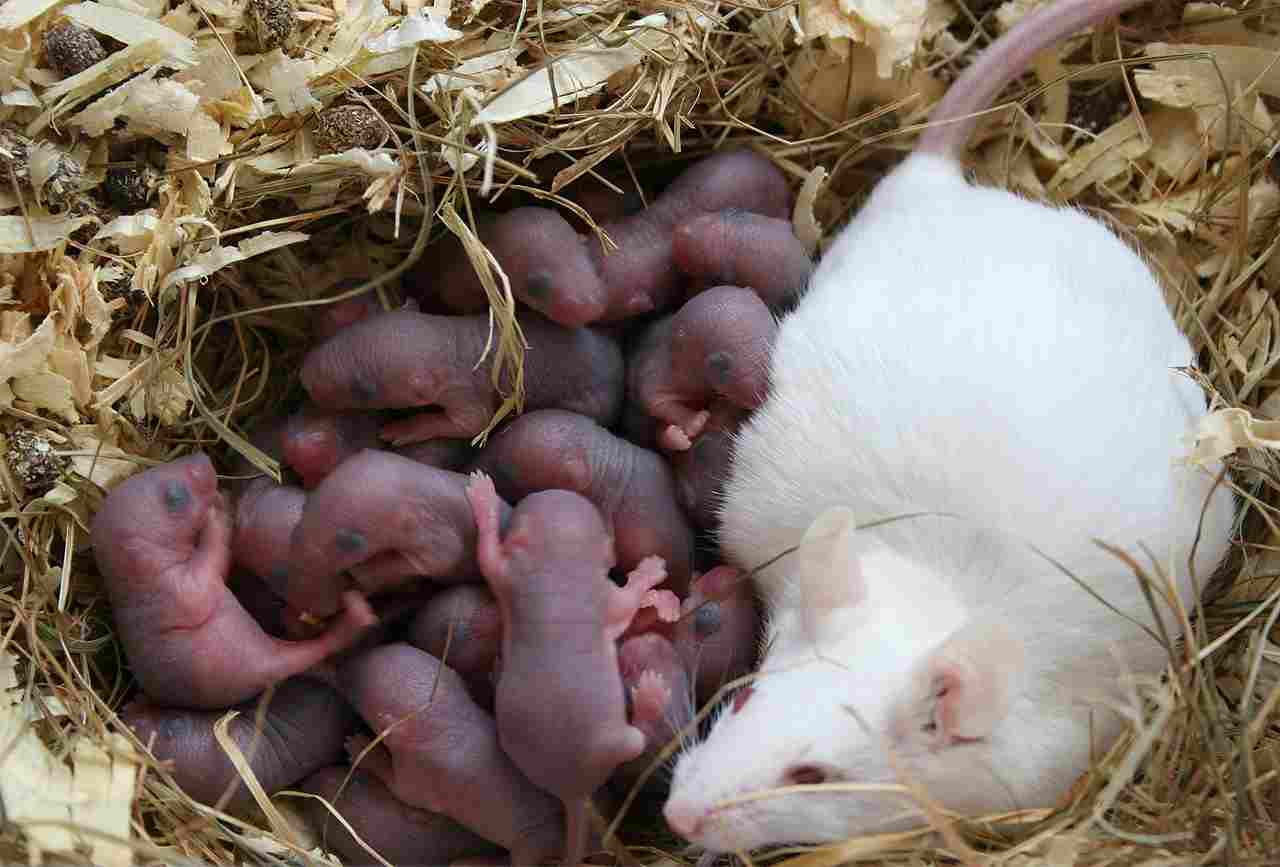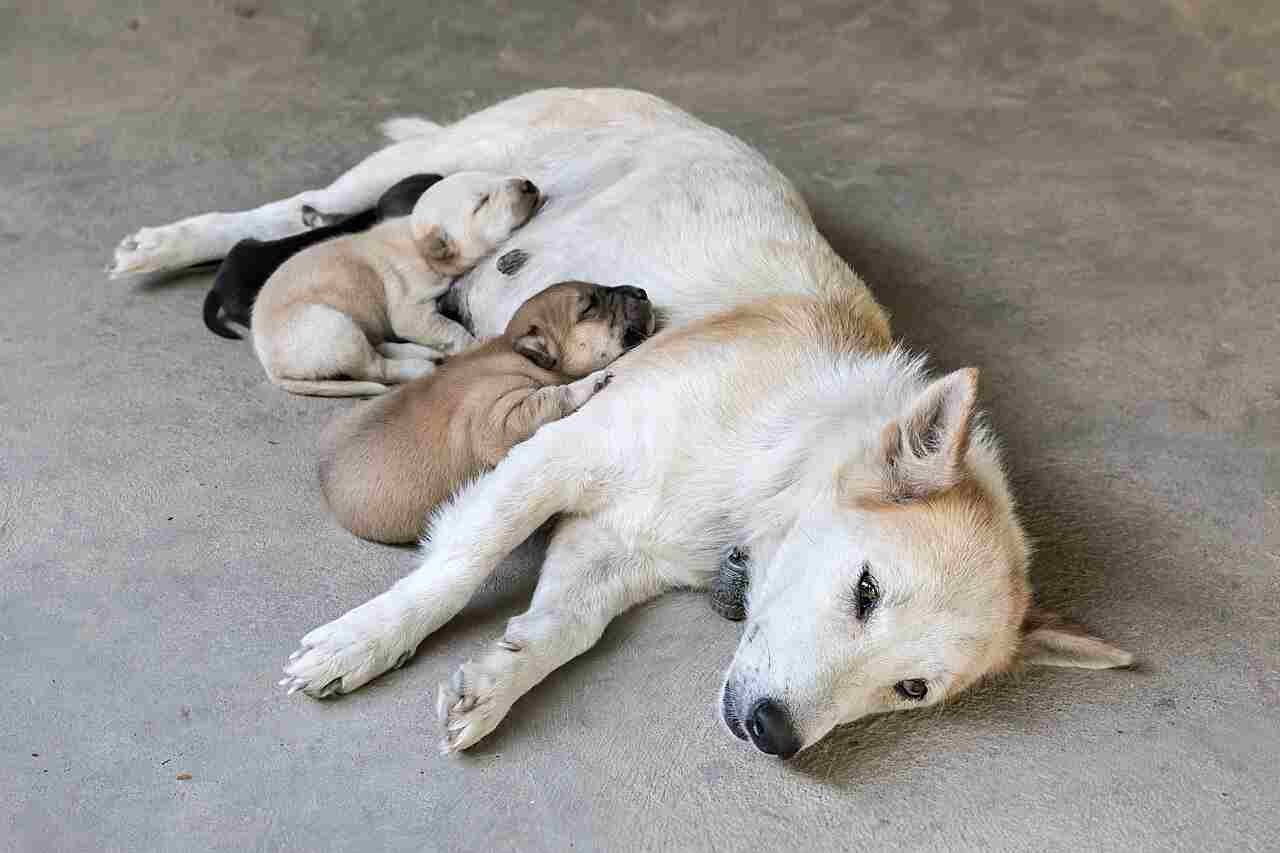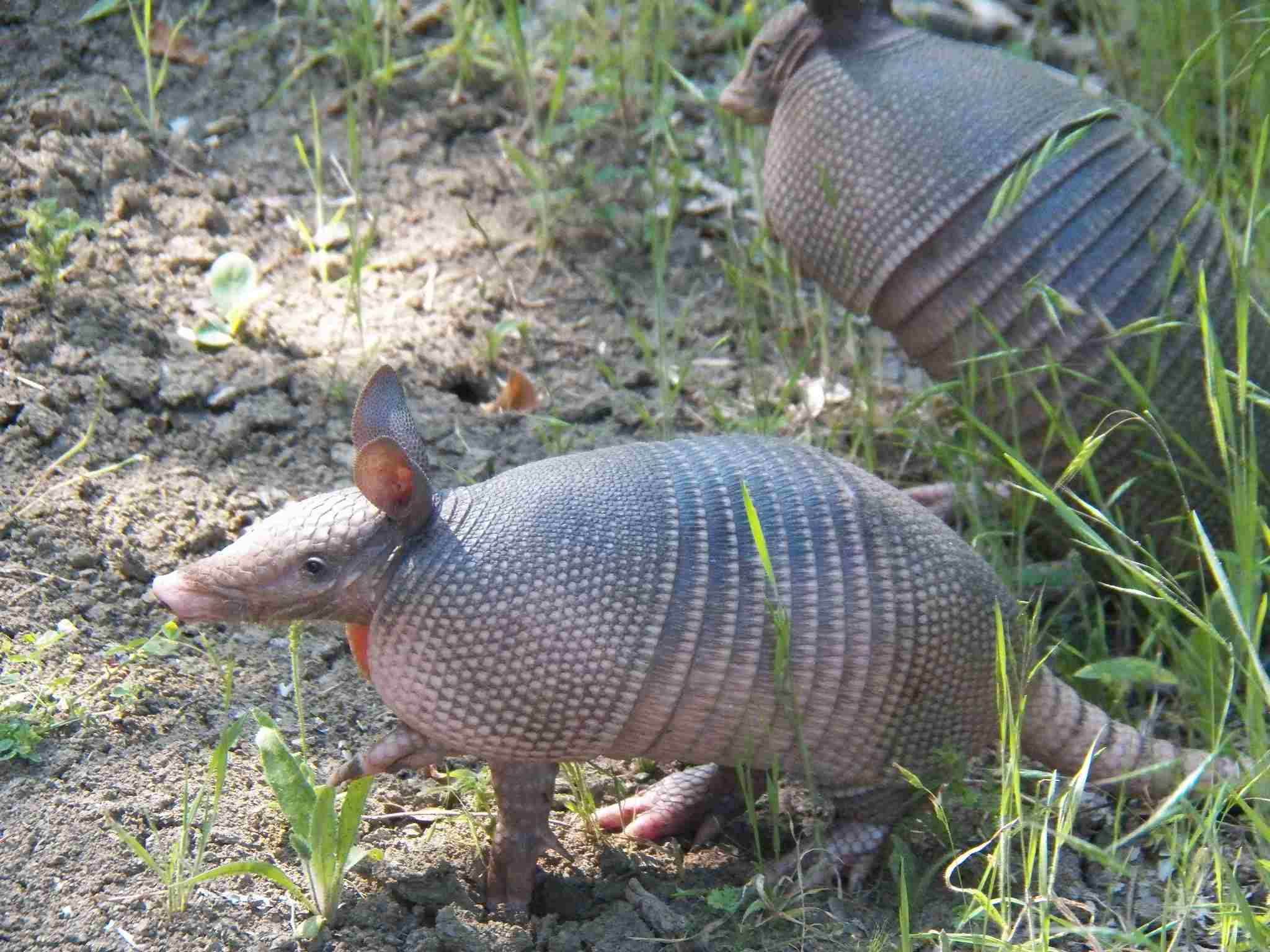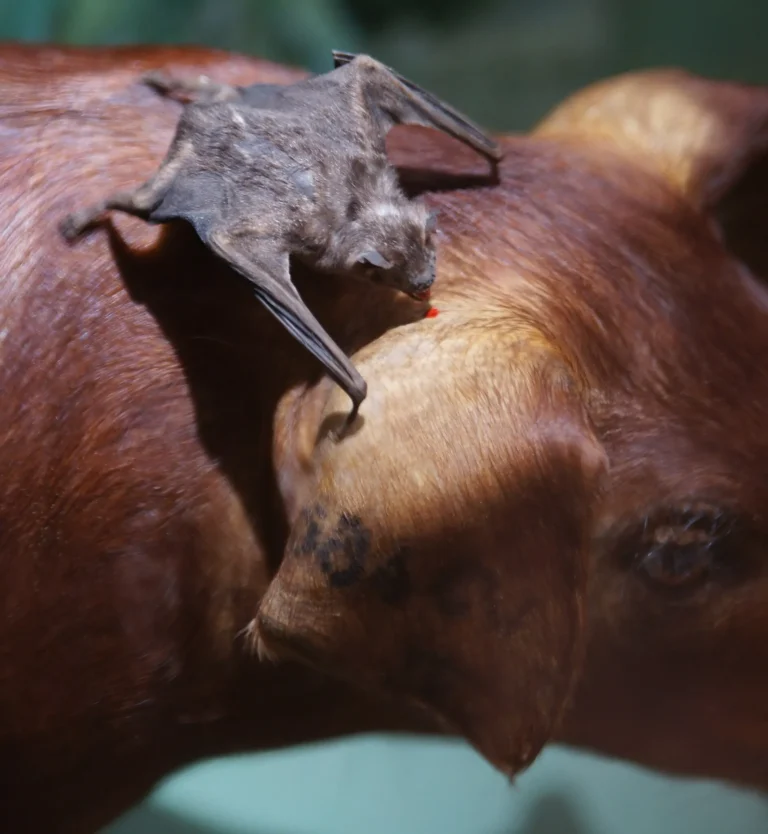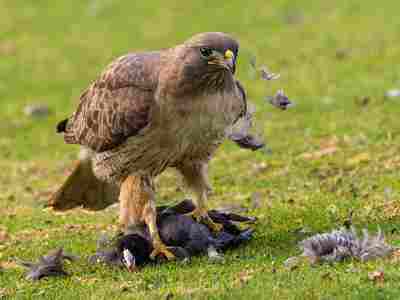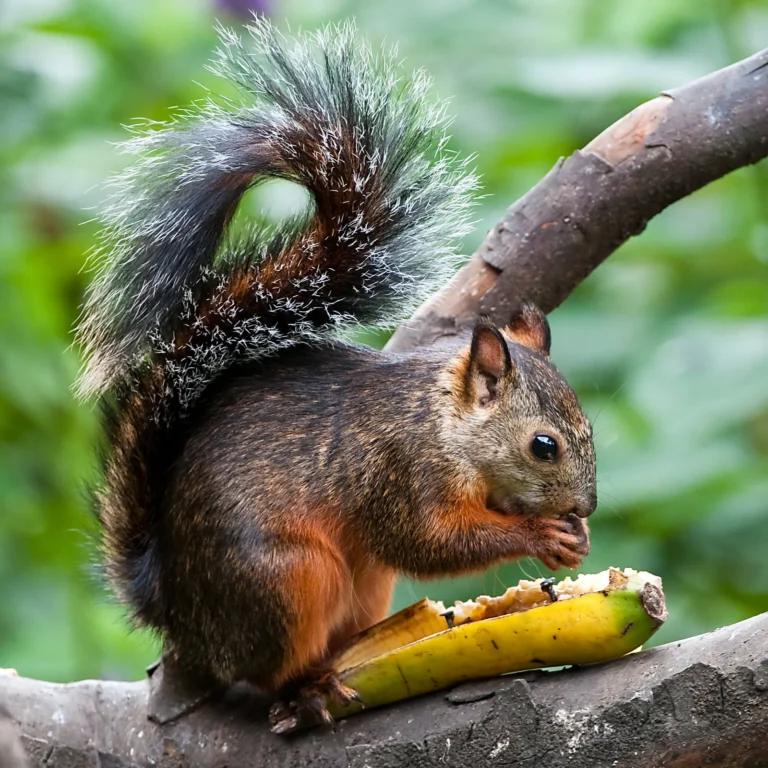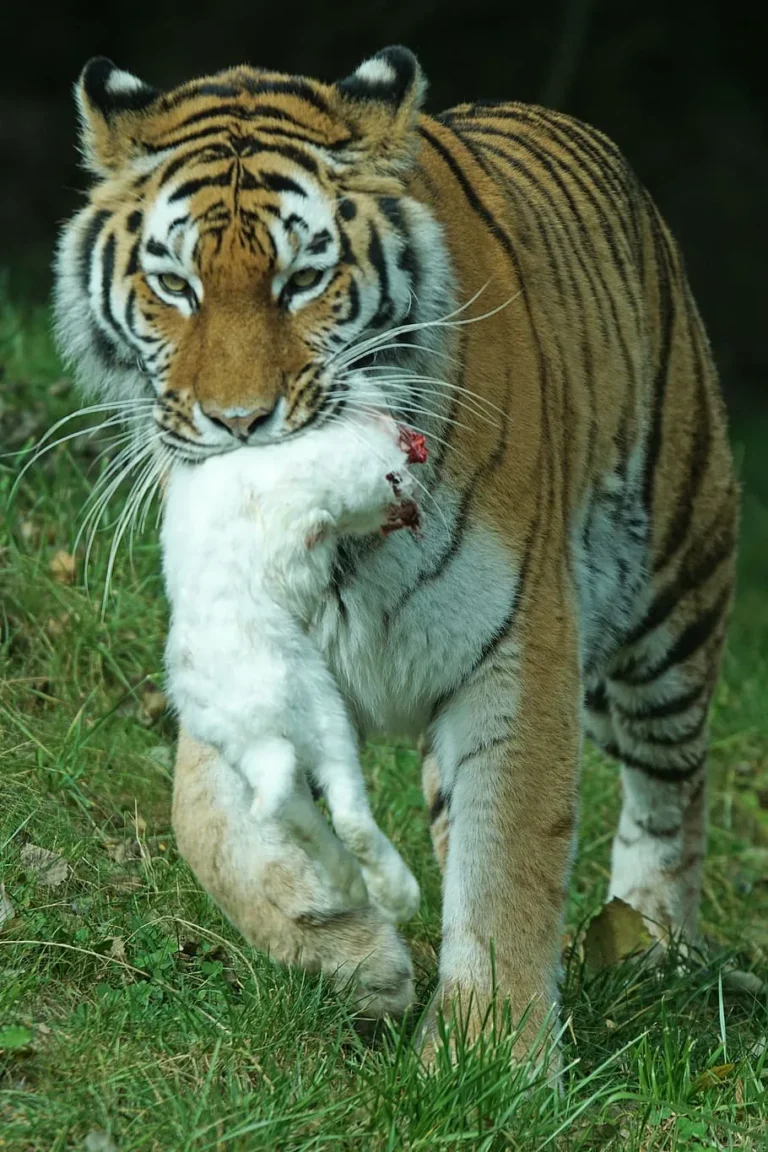Possum Vs Cat Size, Weight, Overall Comparison
In comparing a possum to a cat, it’s crucial to recognize their distinct biological lineages. While both mammals, possums belong to the marsupial family, bearing little genetic relation to the more felid-oriented cats. Analyzing the potential outcome of a confrontation, the cat’s inherent advantages in speed, agility, reflexes, and predatory features position it as the clear favorite in a real-world scenario. However, the generally docile nature of possums makes the likelihood of such an altercation exceedingly slim.
I). Distinct Biological Lineages:
– Possums and cats are not closely related; possums belong to the marsupial family, while cats fall within the order Carnivora, emphasizing their divergent evolutionary paths.
II). Cat’s Inherent Advantages:
– Cats possess superior speed, agility, sharp reflexes, and well-developed predatory instincts. These attributes contribute to their prowess in hunting and potential dominance in confrontations.
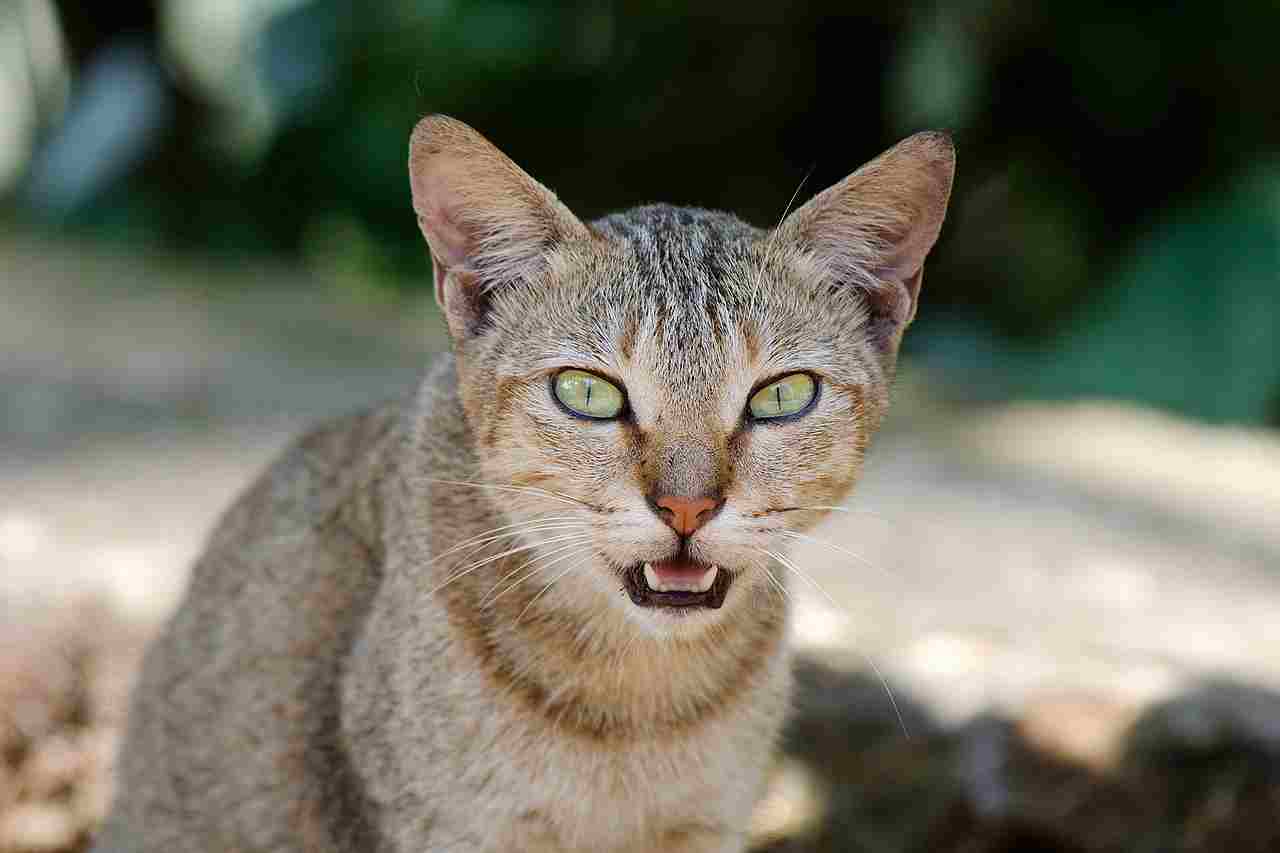
III). Speed and Agility Disparities:
– Cats exhibit remarkable speed and agility, surpassing the capabilities of possums. These physical traits grant cats a significant advantage in maneuvering and evading potential threats.
IV). Reflexes and Predatory Features:
– The cat’s sharper reflexes and evolved predatory features, such as retractable claws and keen hunting instincts, further enhance its ability to subdue potential adversaries.
V). Predicting a Clear Outcome:
– In a real-world confrontation, the cat is likely to emerge as the victor due to its superior physical attributes and predatory nature, outweighing the possum’s comparatively limited defensive capabilities.
VI). Slim Chances of Altercation:
– The generally docile nature of possums (and opossums) reduces the likelihood of confrontations with more aggressive and predatory animals like cats. Their tendency to avoid conflict and their nocturnal habits contribute to a peaceful coexistence with other species.
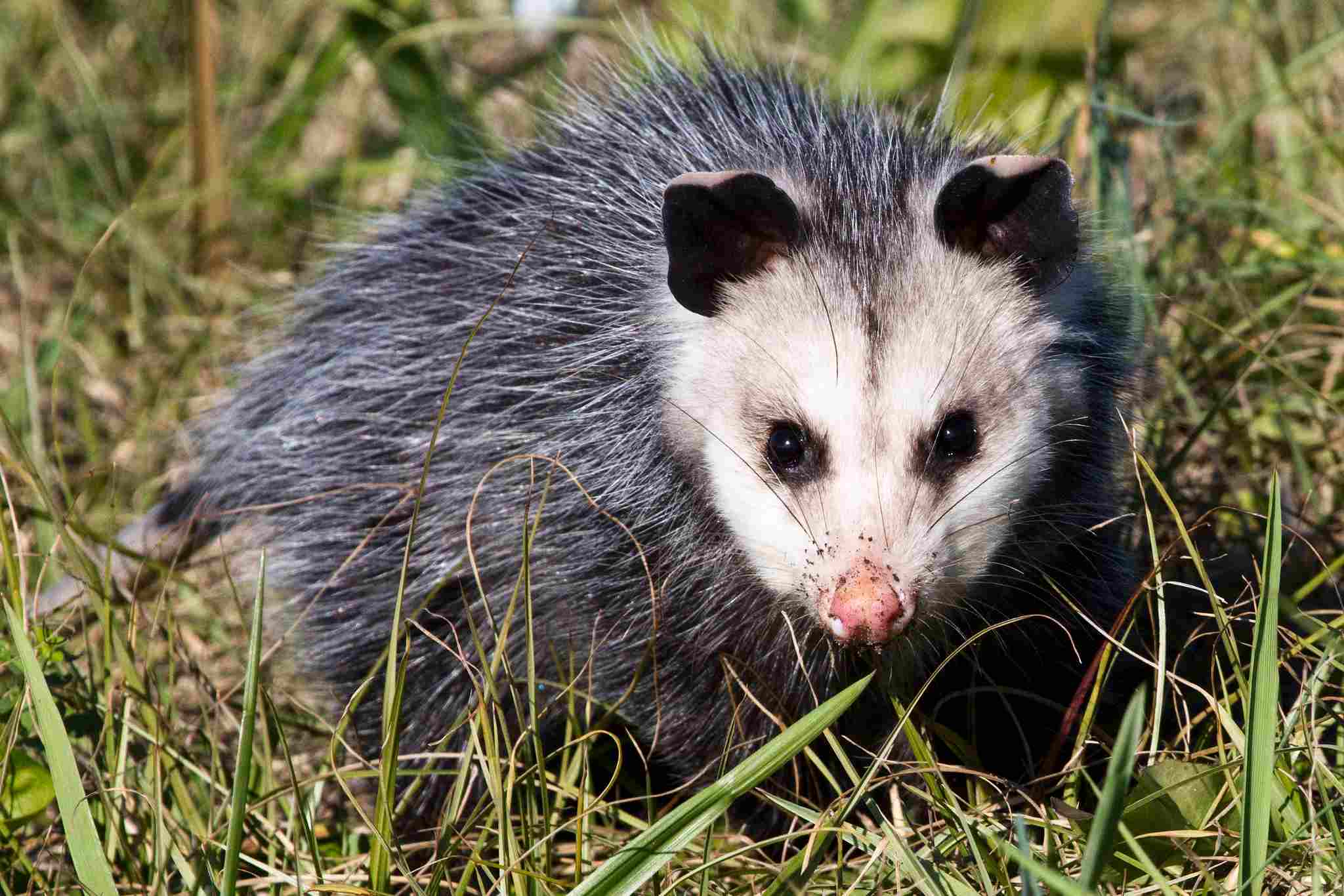
VII). Understanding Natural Behaviors:
– Recognizing the inherent behaviors of possums, characterized by docility and a preference for avoiding conflicts, provides insights into the slim chances of engaging in physical altercations with cats or other potential threats.
VIII). Coexistence Dynamics:
– While differences exist in the biological lineages and physical attributes of possums and cats, their coexistence dynamics often involve minimal direct interactions, emphasizing the adaptive behaviors that contribute to avoiding conflicts in the wild.
IX). Nature’s Varied Strategies:
– Nature has equipped each species with unique strategies for survival. In the case of possums and cats, their distinct evolutionary adaptations and behaviors shape their roles in the ecosystem, minimizing the likelihood of confrontations and fostering a more harmonious cohabitation.
*Details of Comparison
| Criteria | Possums | Cats |
| Appearance | Small to medium-sized, round eyes |
Variable sizes, sleek bodies, retractable claws
|
| Size | 32 to 58 cm (12.6 to 22.8 in) excluding tail |
Varies widely, typically 46 to 61 cm (18 to 24 in)
|
| Weight | 1.2 to 4.5 kg (2.6 to 9.9 lb) |
2 to 7 kg (4.4 to 15.4 lb) for domestic cats
|
| Bite Force (PSI) | Moderate, adapted for diet |
Strong, around 230-250 PSI
|
| Physical Offensive Advantages | Sharp claws and teeth |
Retractable claws, sharp teeth, and agility
|
| Physical Defensive Advantages | Prehensile tail, playing dead |
Agility, speed, defensive postures
|
| Speed | Not known for high speed |
Can reach 30 mph (48 km/h)
|
| Agility | Agile climbers with prehensile tails |
Highly agile with quick reflexes
|
| Senses | Well-developed sense of smell and hearing |
Acute sight, smell, and hearing, night vision
|
| Overall Physical Capacity | Tail for balance, suited for trees |
Versatile physique, strong legs, retractable claws
|
| Habitat Preference(s) | Arboreal habitats |
Adaptable to various environments
|
| Tracks | Five toes on both front and hind feet |
Four toes on both front and hind feet, claws visible
|
| Lifespan | 6 to 12 years |
12 to 15 years for domestic cats
|
| Mode of Feeding | Herbivores, primarily folivores |
Carnivores, obligate carnivores for domestic cats
|
| Intelligence | Problem-solving skills |
Highly intelligent, including social intelligence
|
| Social Behavior | Generally solitary, limited social interactions |
Can display both solitary and social behaviors
|
| Mode of Reproduction | Marsupials with a short gestation period |
Mammals with a longer gestation period
|
| Parental Behavior | Maternal care, especially in pouch phase |
Maternal care, more extended parental involvement
|
| Proximity to Human-Inhabited Areas | May venture into gardens |
Frequently found in urban areas
|
| Behavior Toward Humans | Generally shy |
Varied, from affectionate to independent
|
| Danger Posed to Humans | Not considered dangerous |
Not inherently dangerous, potential for scratches or bites
|
| Associated Precautions | Caution advised when approaching, proper waste disposal |
Approach unfamiliar cats cautiously, responsible pet ownership
|
| Conservation Status | Varies among species |
Domestic not under conservation status, feral cats a concern
|
| Conclusion | Adaptive behaviors, contributions to ecological balance |
Fundamental biological differences, varied ecological implications
|
Key Points
- Possums and cats exhibit diverse physical characteristics and behaviors.
- Cats generally have a more varied and adaptable nature.
- Both contribute to ecological balance but with different ecological implications.
- Cats may pose concerns in terms of feral populations impacting local ecosystems.
- Conservation efforts may be more focused on specific possum species.
1. Taxonomy:
Possum:
Kingdom: Animalia
Phylum: Chordata
Class: Mammalia
Order: Diprotodontia
Family: Phalangeridae (for marsupial possums)
Genus: Various genera, e.g., Trichosurus (common brushtail possum)
Species: Various species, e.g., Trichosurus vulpecula (common brushtail possum)
Cat:
Kingdom: Animalia
Phylum: Chordata
Class: Mammalia
Order: Carnivora
Family: Felidae
Genus: Felis (domestic cat)
Species: Felis catus
2. Appearance:

Possum:
Generally small to medium-sized marsupials with a furry tail.
Fur color varies, often gray or brown, adapted for nocturnal activity.
Prominent, round eyes for low-light vision.
Distinctive large, pointed ears.
Cat:
Varying sizes, from small domestic breeds to larger wild species.
Fur color and pattern highly diverse, influenced by breed and environment.
Slender bodies, retractable claws, and sharp teeth.
Cats often have a more streamlined appearance compared to possums.
Ecological Implications:
Possums contribute to ecosystem balance by controlling insect populations.
Cats, especially feral ones, can impact native bird and small mammal populations through predation.
3. Size:
Possum:
Common brushtail possums range from 32 to 58 cm (12.6 to 22.8 in) excluding the tail.
Various species exhibit size variations within the possum family.
Cat:
Domestic cats vary widely in size, typically 46 to 61 cm (18 to 24 in) in length.
Wild cat species, like the African wildcat, can be larger.
Comparison:
Domestic cats can be similar or larger than some possum species.
Ecological Implications:
Size influences the prey they can target, affecting the balance of local ecosystems.
4. Weight:
Possum:
Common brushtail possums weigh around 1.2 to 4.5 kg (2.6 to 9.9 lb).
Cat:
Domestic cat weights range from 2 to 7 kg (4.4 to 15.4 lb).
Larger wild cat species can weigh significantly more.
Comparison:
Cats, especially larger wild species, tend to be heavier than possums.
Ecological Implications:
Weight impacts predation dynamics and resource competition within ecosystems.
5. Bite Force (PSI – Pounds per Square Inch):
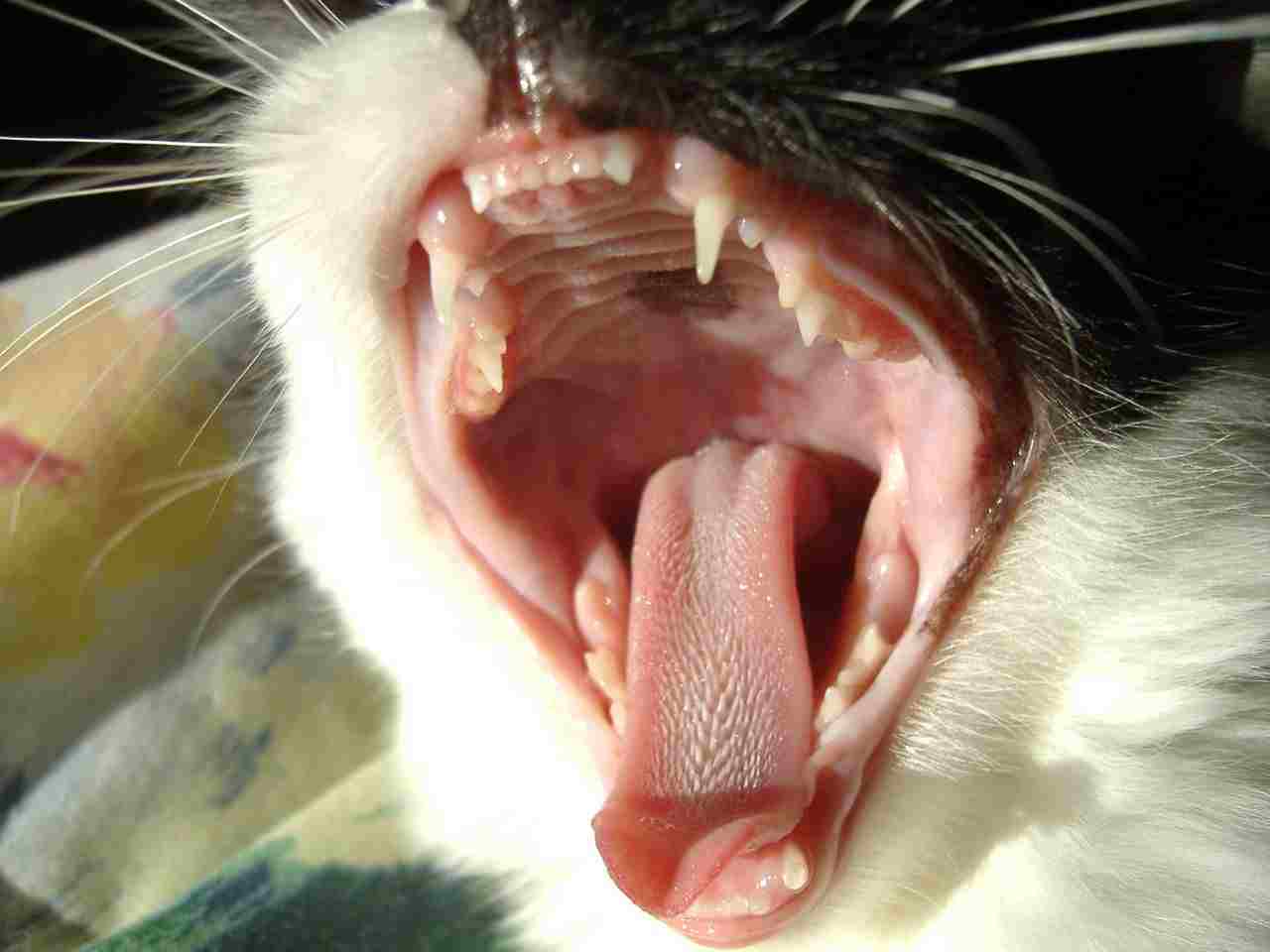
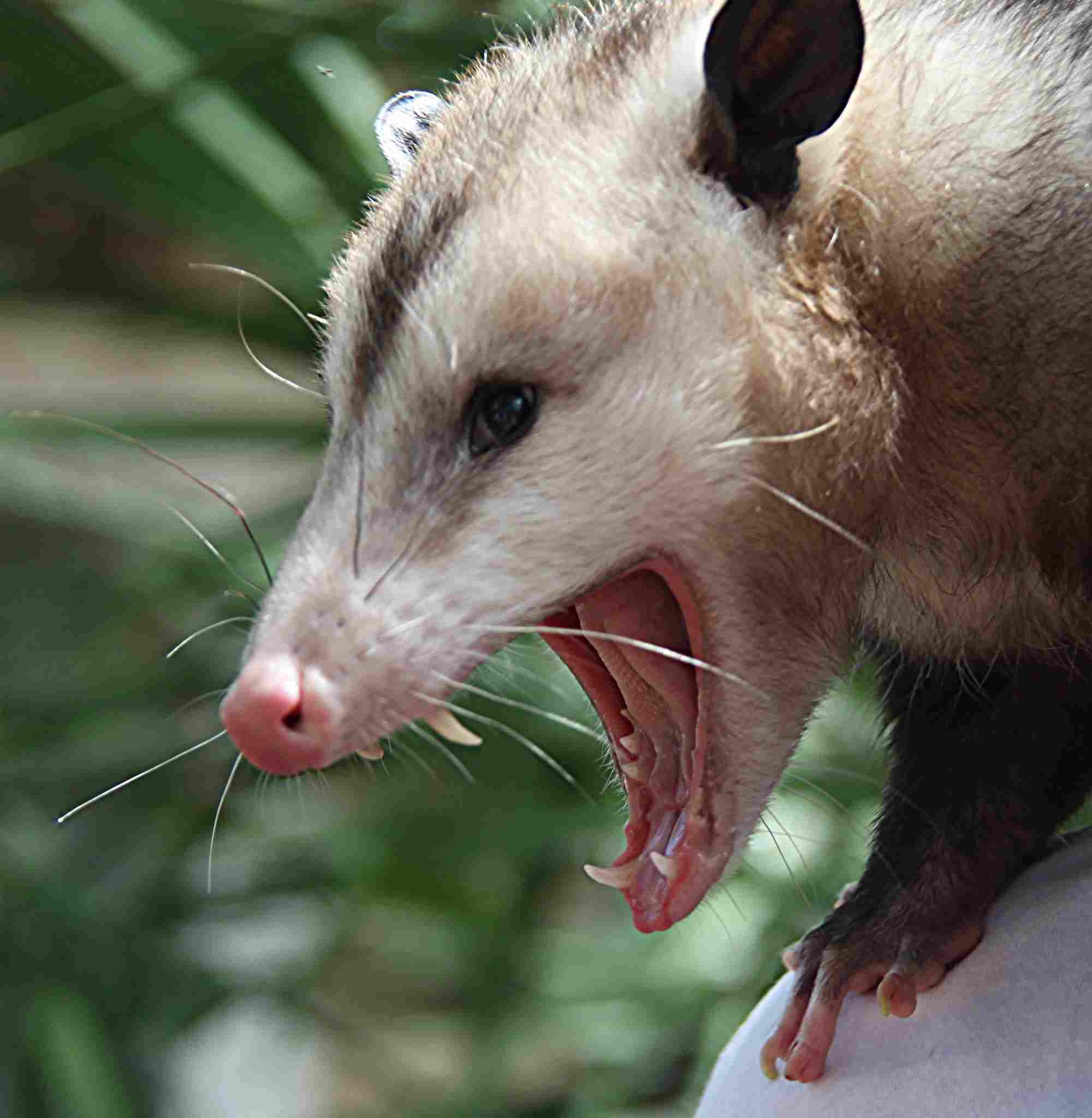
Possum:
Limited data available; possums generally have a moderate bite force adapted for their diet.
Cat:
Domestic cats have a bite force of around 230-250 PSI, crucial for hunting and feeding on a variety of prey.
Comparison:
Cats typically have a stronger bite force, reflecting their carnivorous nature.
Ecological Implications:
Bite force affects hunting capabilities, influencing the species’ role in the food chain.
6. Physical Offensive Advantages:
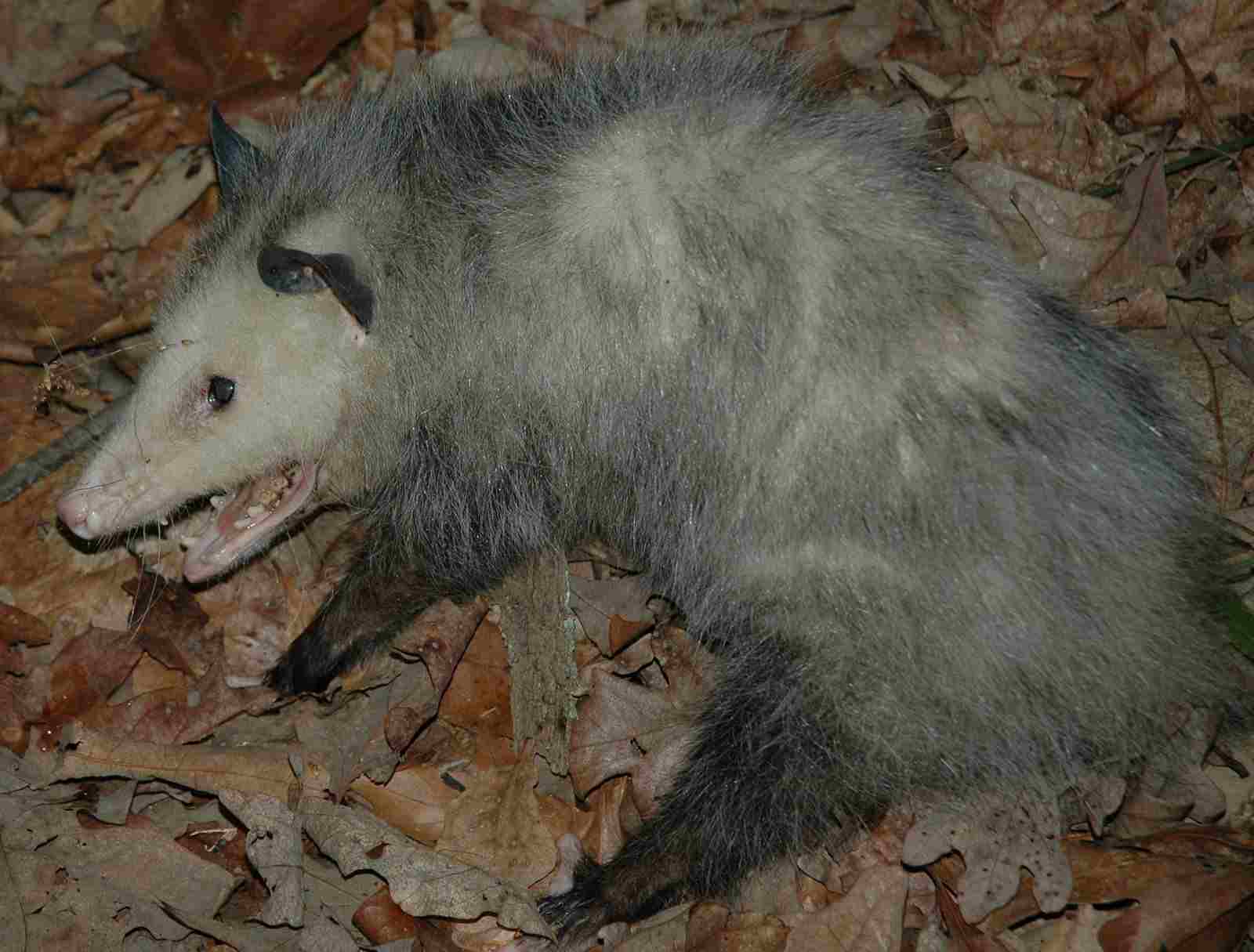
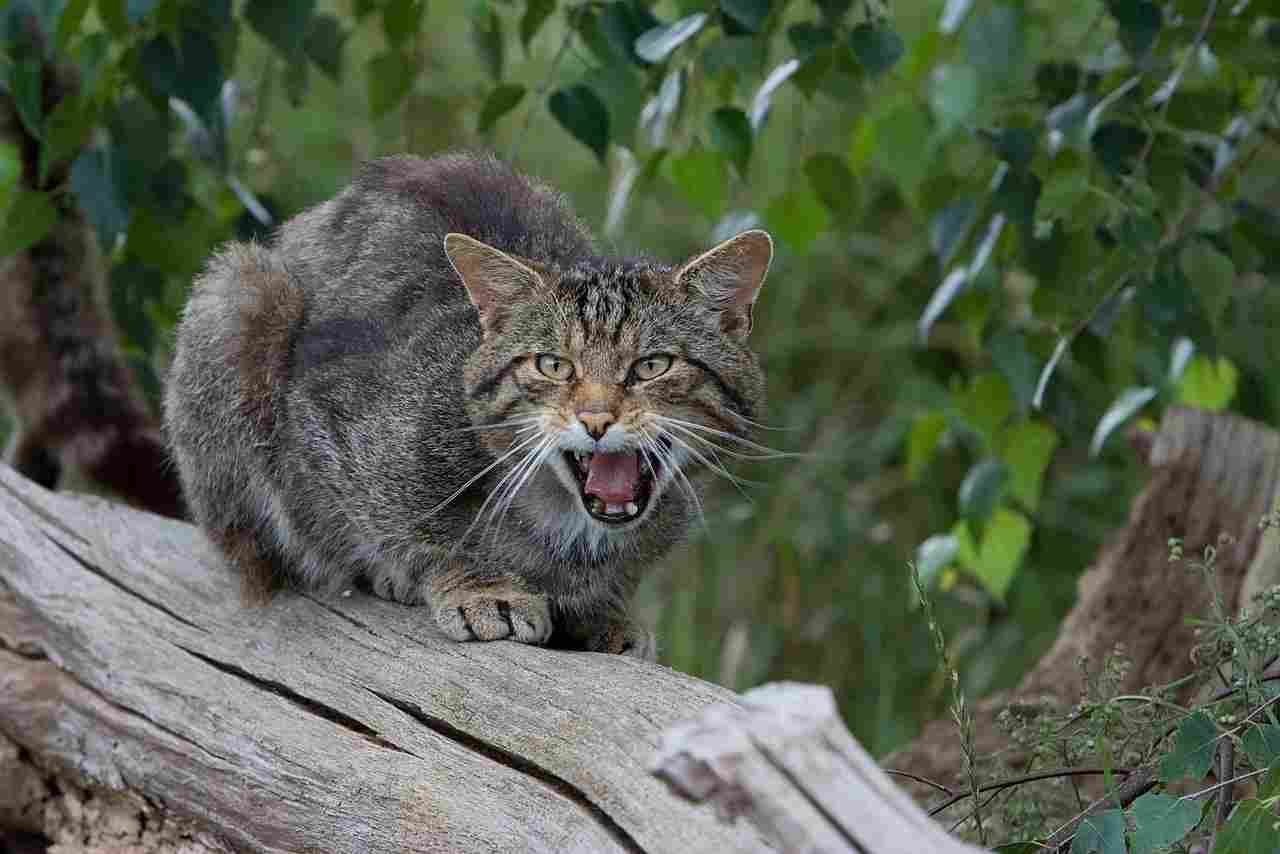
Possum:
Sharp claws and teeth for climbing and self-defense.
Capable of delivering a bite if threatened.
Cat:
Retractable claws and sharp teeth for hunting and self-defense.
Quick and agile movements enhance their offensive abilities.
Comparison:
Both possess sharp claws and teeth, but cats may have a more specialized hunting advantage.
Ecological Implications:
Offensive capabilities contribute to their respective roles in predation and ecological interactions.
7. Physical Defensive Advantages:
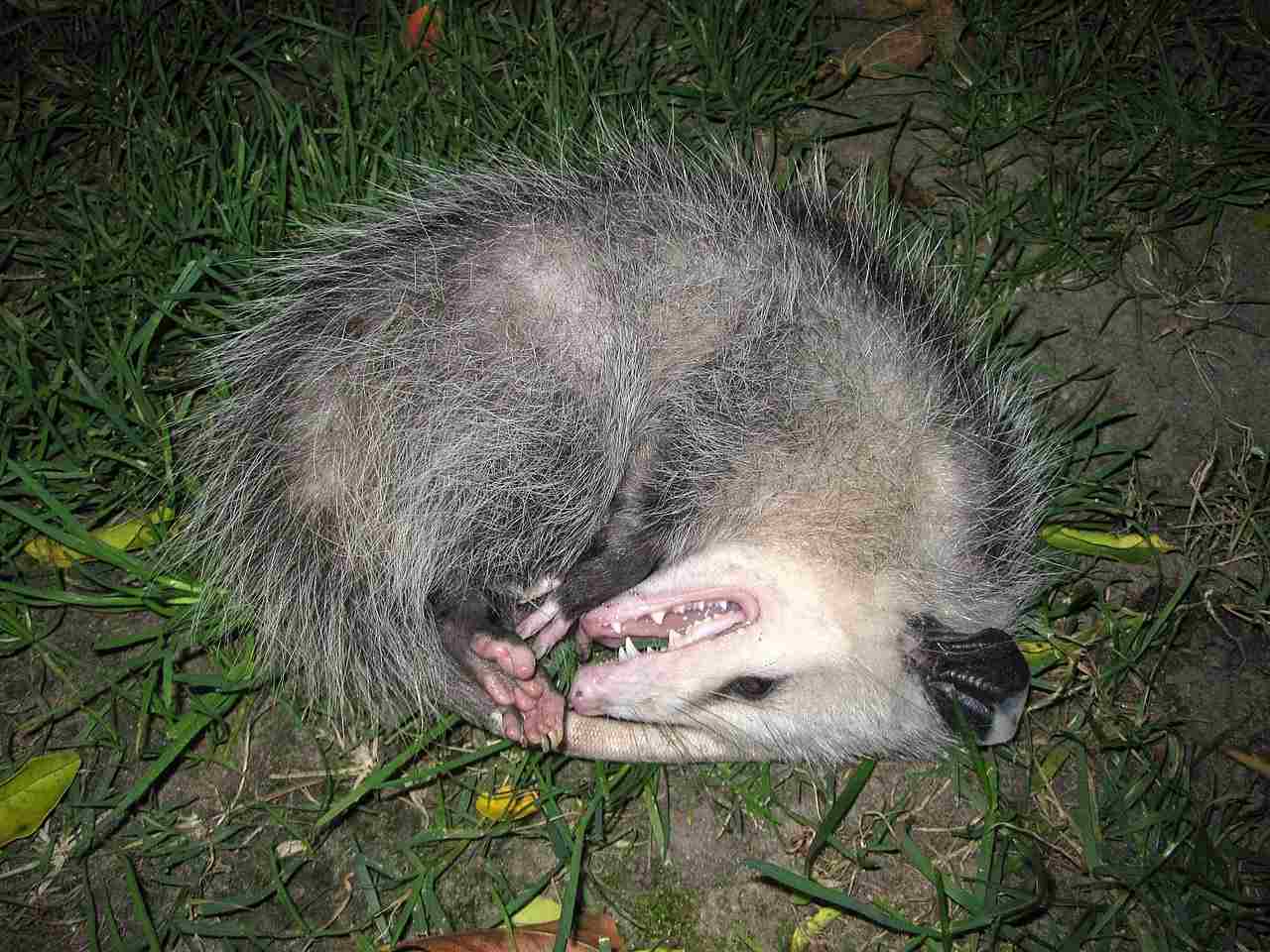
Possum:
Prehensile tail for balance and maneuvering in trees.
May play dead (playing possum) as a defense mechanism.
Cat:
Agility and speed aid in evasion.
Cats may arch their back, puff up, and hiss when threatened.
Comparison:
Possums often rely on playing dead as a unique defensive strategy.
Ecological Implications:
Defensive mechanisms influence their survival strategies in different ecological niches.
8. Speed (Km/hour or Mile/hour):
Possum:
Possums are not known for high-speed capabilities; they are more adapted to climbing and navigating trees.
Cat:
Domestic cats can reach speeds of 30 mph (48 km/h).
Wild cat species may have varying speeds based on size and habitat.
Comparison:
Cats generally have higher running speeds compared to possums.
Ecological Implications:
Speed affects hunting success and escape abilities, influencing their roles in the ecosystem.
9. Agility:
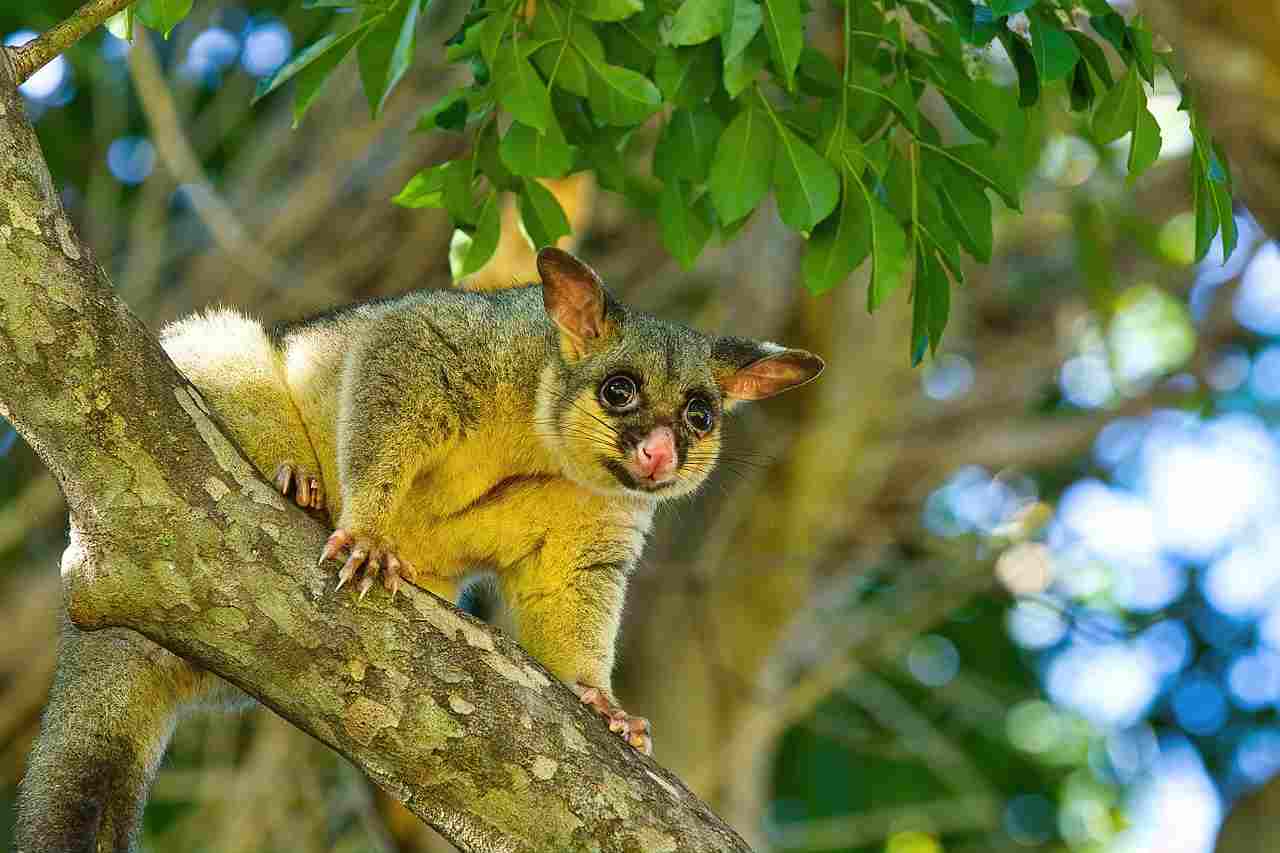
Possum:
Agile climbers with a prehensile tail.
Well-adapted for navigating through trees and dense vegetation.
Cat:
Highly agile with flexible bodies and quick reflexes.
Cats are known for their ability to navigate various terrains gracefully.
Comparison:
Both possums and cats exhibit agility, but cats may have a more refined predatory agility.
Ecological Implications:
Agility contributes to hunting success and survival in different environmental conditions.
10. Senses:
Possum:
Well-developed sense of smell and hearing.
Nocturnal vision adapted for low light.
Cat:
Acute senses of sight, smell, and hearing.
Cats have exceptional night vision.
Comparison:
Both possums and cats rely on heightened senses for survival, adapted to their respective lifestyles.
Ecological Implications:
Sensory adaptations impact their roles as predators and prey in the ecosystem.
11. Overall Physical Capacity:
Possum:
Tail assists in balance and climbing.
Well-suited for arboreal habitats.
Cat:
Agile and versatile physique for hunting and exploration.
Strong legs and retractable claws enhance physical capabilities.
Comparison:
Cats generally exhibit a more versatile and predatory physical capacity.
Ecological Implications:
Physical adaptations influence their ecological roles and niche preferences.
12. Habitat Preference(s):
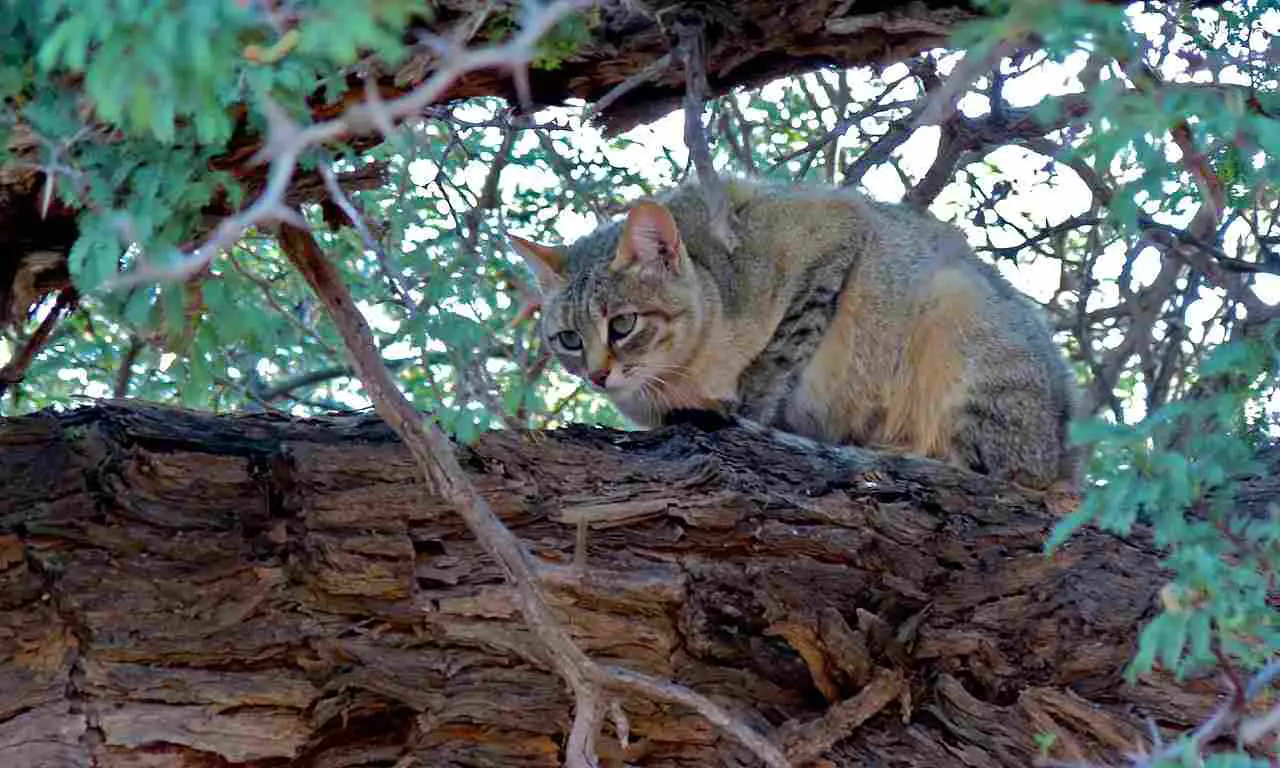

Possum:
Arboreal habitats, such as forests and woodlands.
Tree hollows and dens for shelter.
Cat:
Adaptable to various environments, including urban areas, forests, and grasslands.
May establish territories in diverse habitats.
Comparison:
Possums are more specialized in arboreal habitats, while cats are adaptable to a wider range.
Ecological Implications:
Habitat preferences impact their interactions with other species and ecosystems.
13. Tracks:
Possum:
Distinctive tracks with five toes on both front and hind feet.
Hind foot often longer than the front, displaying a unique pattern.
Cat:
Tracks typically show four toes on both front and hind feet.
Claws may be visible in the track, especially in soft soil.
Comparison:
The number and arrangement of toes in their tracks distinguish possums from cats.
Ecological Implications:
Tracking helps in studying their presence and movement within a given habitat.
14. Lifespan:
Possum:
Wild possums generally have a lifespan of 6 to 12 years.
Lifespan can vary among different species.
Cat:
Domestic cats typically live 12 to 15 years, with some reaching 20 years or more.
Wild cat species may have shorter lifespans due to environmental factors.
Comparison:
Domestic cats often have longer lifespans compared to many wild possum species.
Ecological Implications:
Lifespan influences population dynamics and the impact of each species on their ecosystem.
15. Mode of Feeding:
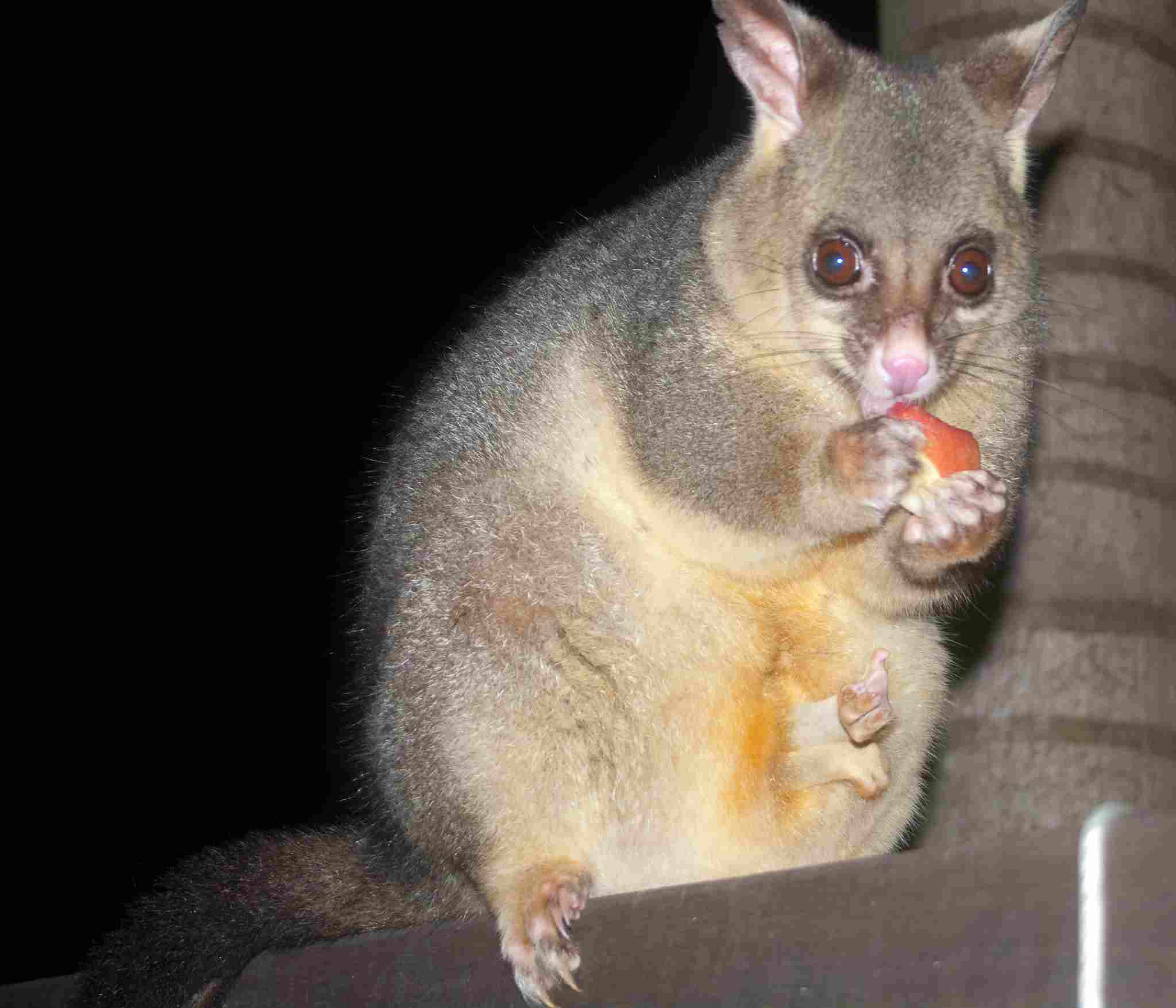
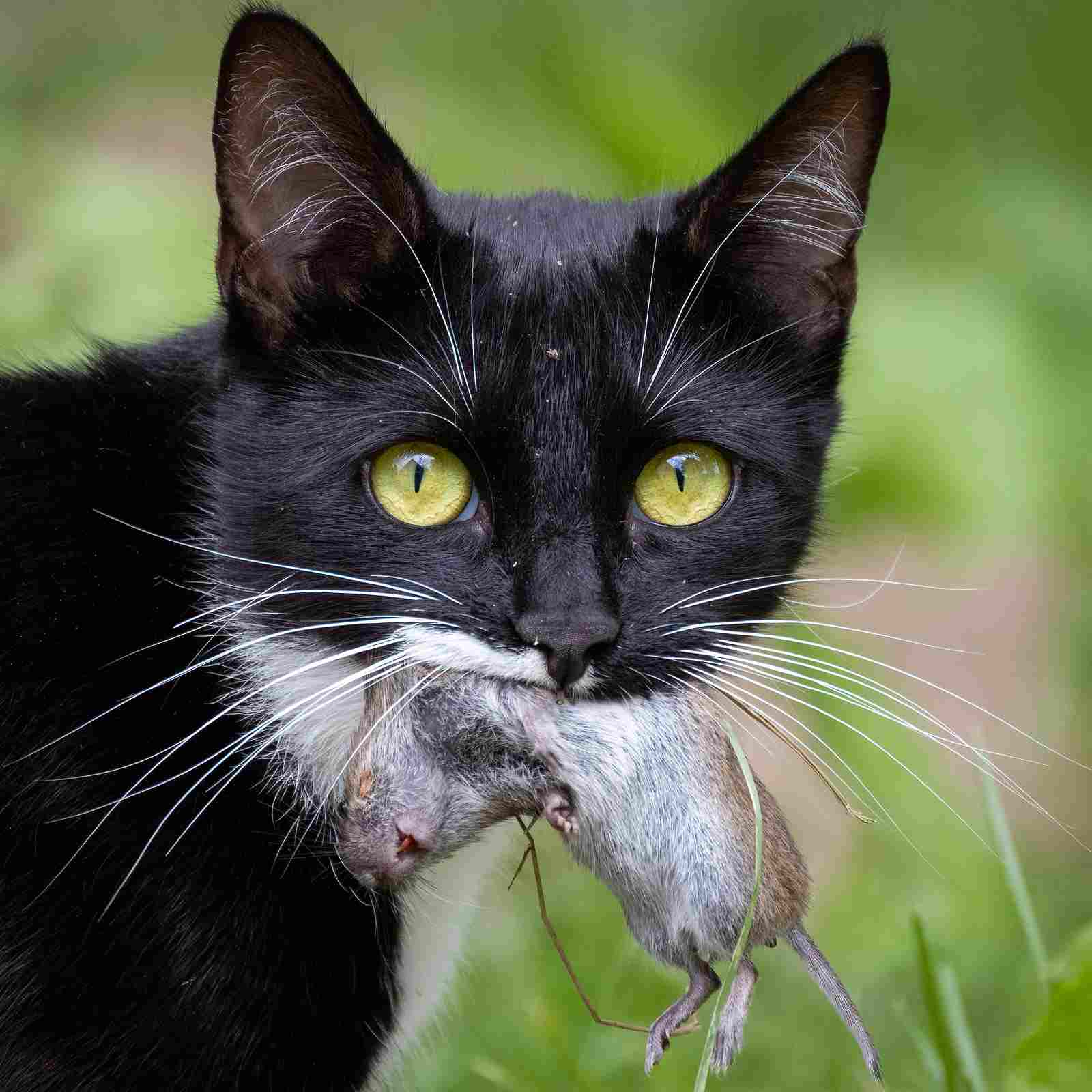
Possum:
Primarily herbivores, feeding on leaves, fruits, and occasionally insects.
Well-adapted to a folivorous diet.
Cat:
Carnivores with a diet rich in meat.
Domestic cats are obligate carnivores, relying solely on animal-based protein.
Comparison:
Fundamental difference in dietary preferences with possums being herbivores and cats being obligate carnivores.
Ecological Implications:
Feeding habits influence their role in the food chain and impact on local fauna.
16. Intelligence:
Possum:
Display problem-solving skills, especially in finding food.
Limited social structure and interaction.
Cat:
Highly intelligent, displaying problem-solving, learning, and memory capabilities.
Domestic cats can form complex social relationships.
Comparison:
Cats generally exhibit higher levels of intelligence, including social intelligence.
Ecological Implications:
Intelligence influences their ability to adapt to changing environments and interact within ecosystems.
17. Social Behavior:
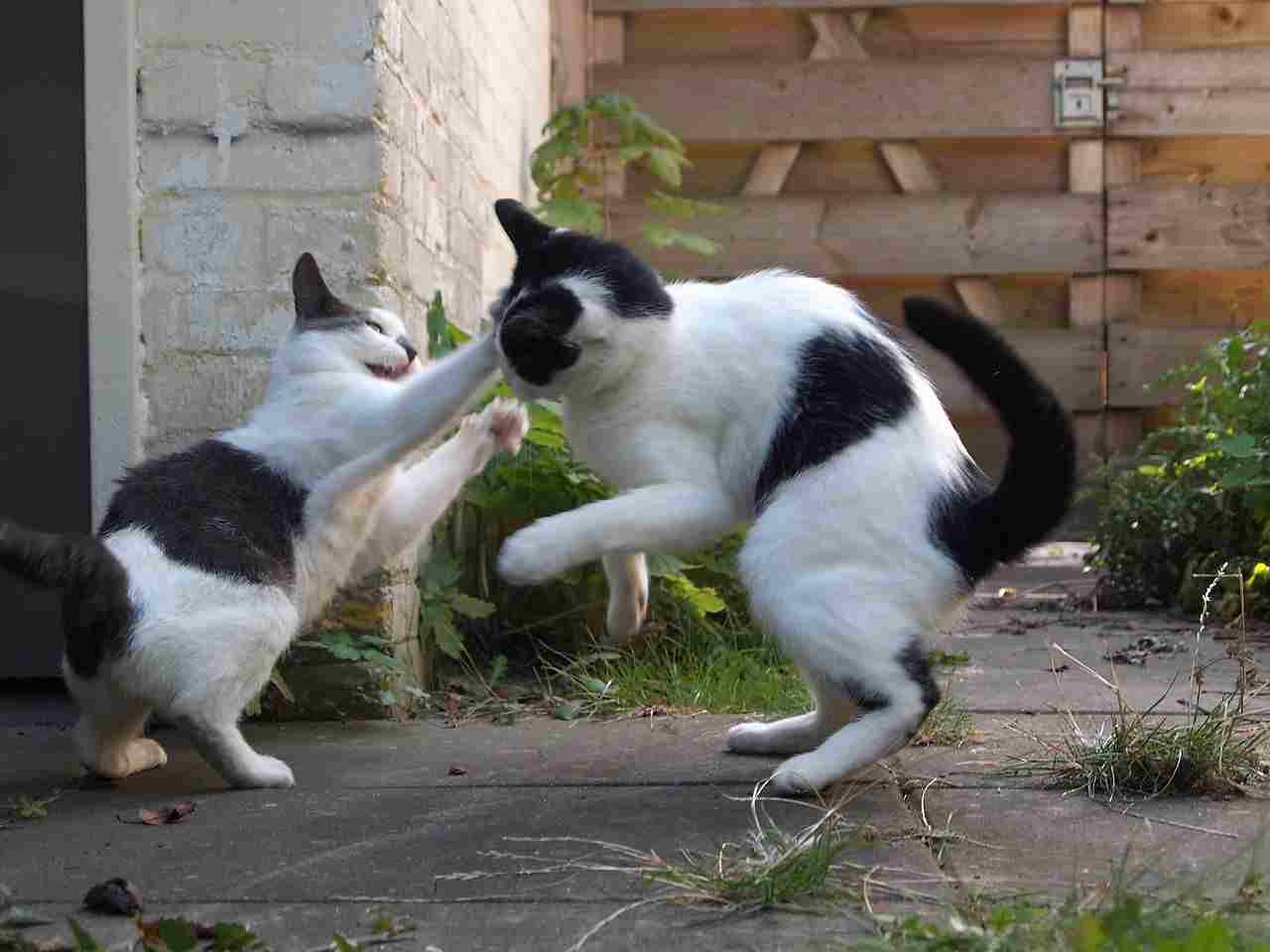
Possum:
Generally solitary with limited social interactions.
Mating and parental care are primary social activities.
Cat:
Can display both solitary and social behaviors.
Domestic cats may form social groups, while some wild cats are more solitary.
Comparison:
Cats show a broader range of social behaviors compared to possums.
Ecological Implications:
Social behavior influences the structure and dynamics of their populations within ecosystems.
18. Mode of Reproduction:
Possum:
Marsupials with a short gestation period.
Give birth to relatively undeveloped young, which continue development in the mother’s pouch.
Cat:
Mammals with a longer gestation period.
Give birth to more developed young, which are nursed without the need for a pouch.
Comparison:
Fundamental difference in reproductive strategies, with possums being marsupials and cats having a more traditional mammalian approach.
Ecological Implications:
Reproductive strategies impact population growth rates and dynamics within ecosystems.
19. Parental Behavior:
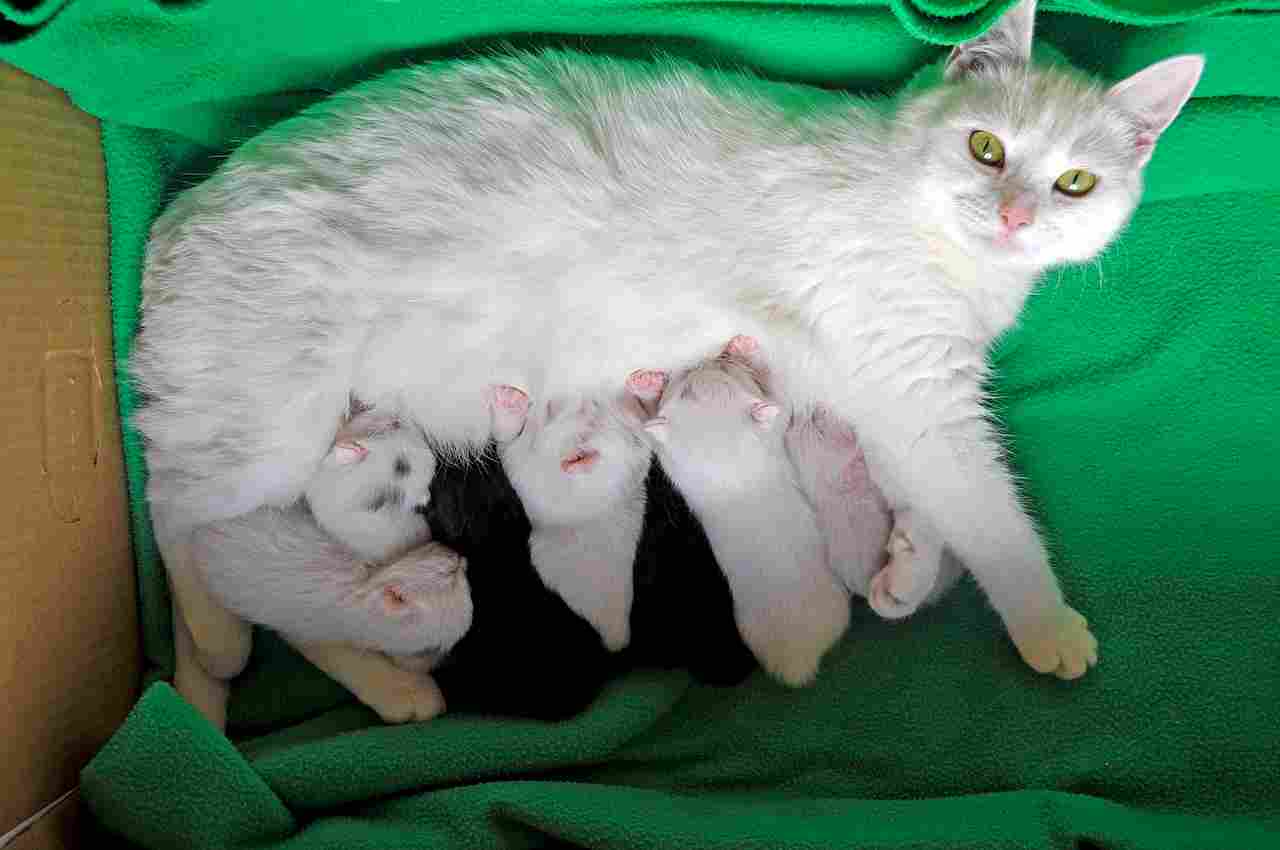
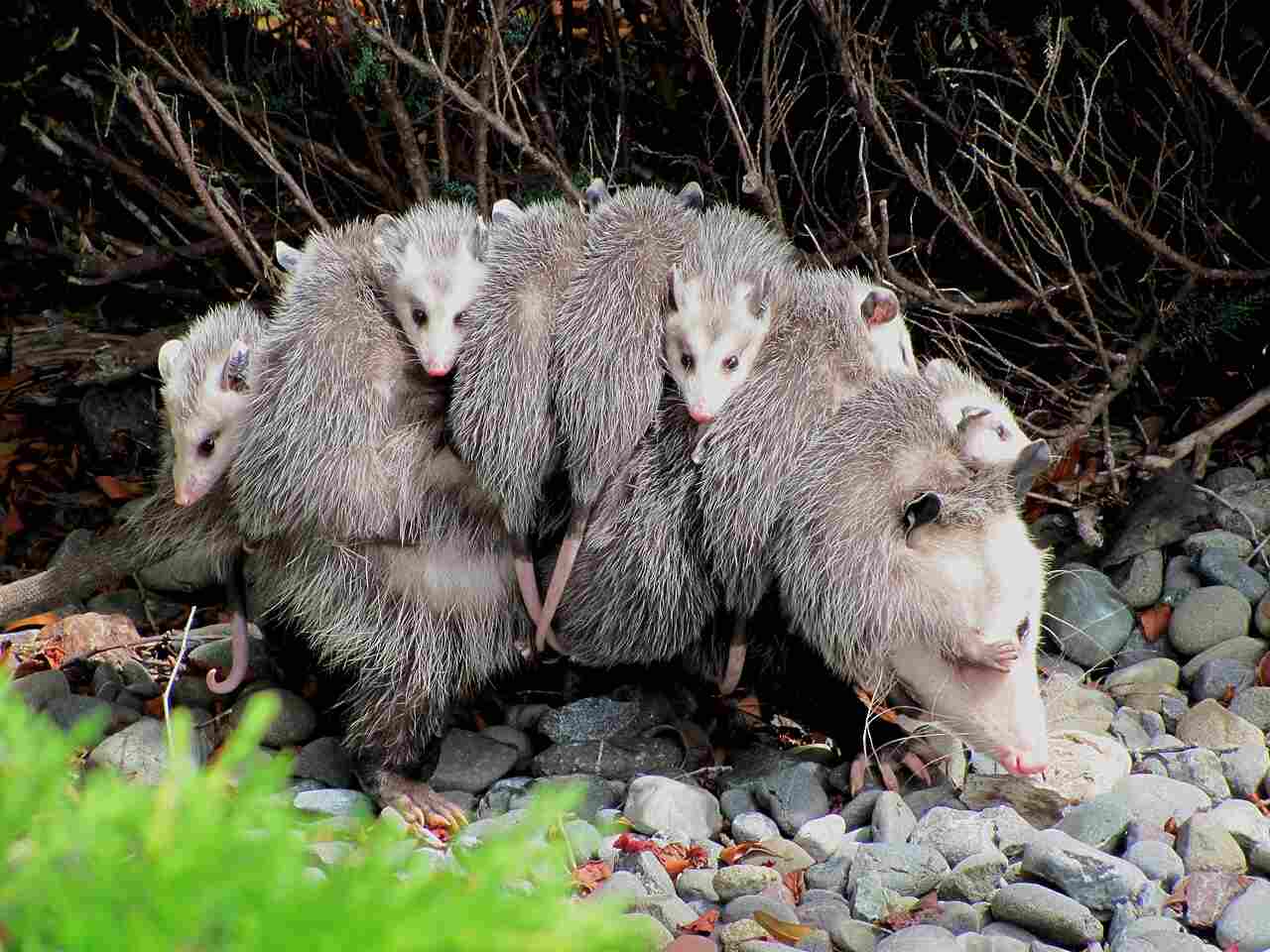
Possum:
Female possums provide maternal care, especially in the pouch phase.
Limited parental care beyond weaning.
Cat:
Female cats exhibit maternal care, nursing and protecting their kittens.
Domestic cats may display more extended maternal care compared to possums.
Comparison:
Cats generally exhibit more prolonged parental care and involvement compared to possums.
Ecological Implications:
Parental behavior influences the survival and development of offspring, impacting population dynamics.
20. Proximity to Human-Inhabited Areas:
Possum:
Possums may venture into gardens and urban areas but are more commonly associated with wooded environments.
Cat:
Domestic cats are frequently found in human-inhabited areas, including urban and suburban settings.
Feral cats may establish territories in diverse habitats.
Comparison:
Cats, particularly domestic and feral ones, are more adapted to coexisting with humans in various environments.
Ecological Implications:
Proximity to human-inhabited areas affects interactions with domesticated animals, including potential ecological disruptions.
21. Behavior Toward Humans:
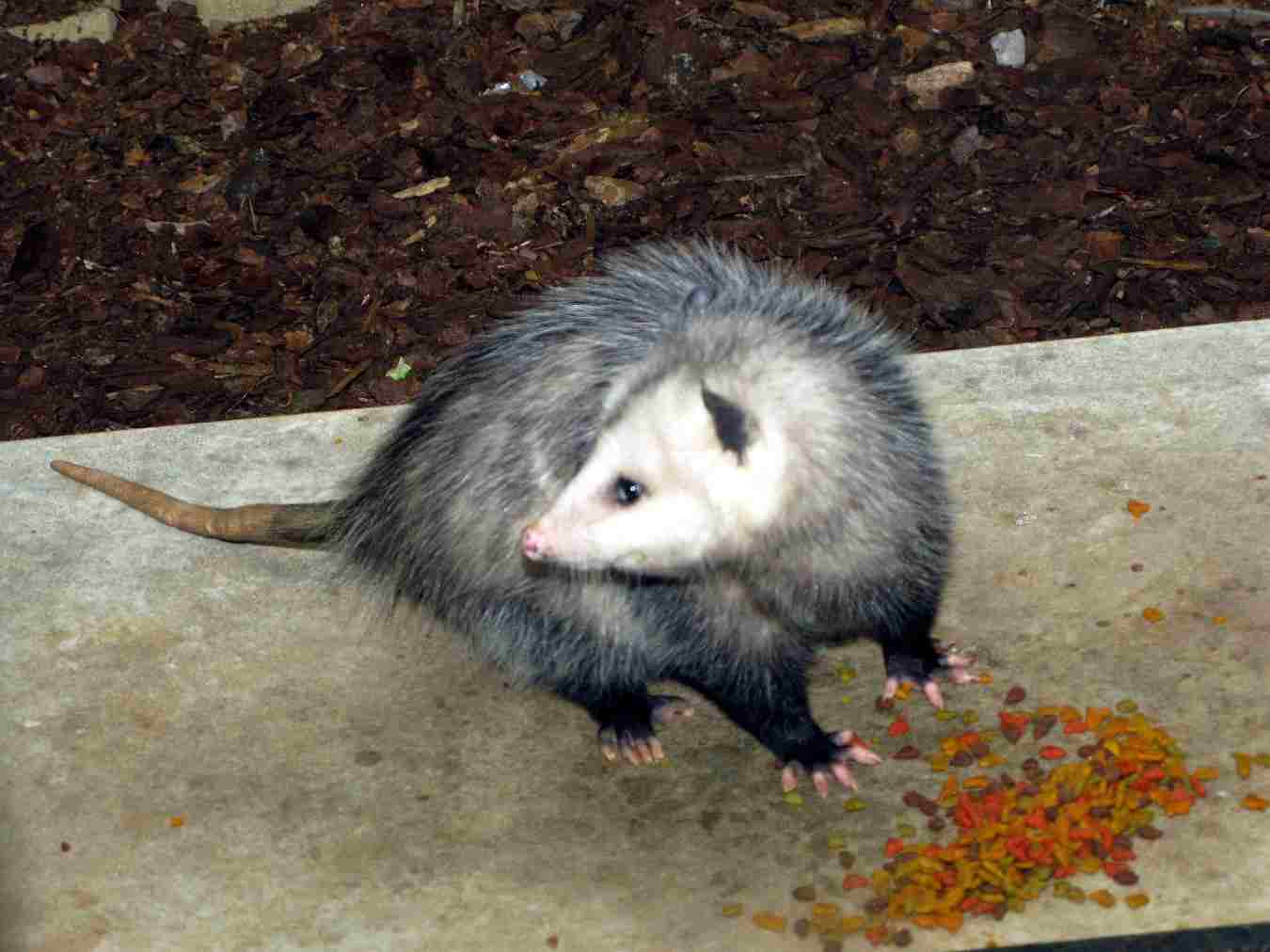
Possum:
Generally shy and may avoid direct interaction with humans.
Can become accustomed to human presence, especially in urban settings.
Cat:
Domestic cats may show a range of behaviors, from affectionate to more independent.
Feral cats may exhibit more cautious or elusive behavior around humans.
Comparison:
Cats, both domestic and feral, often exhibit more varied and complex behaviors towards humans compared to possums.
Ecological Implications:
Human-animal interactions can influence the well-being of these species and impact local ecosystems.
22. Danger Posed to Humans:
Possum:
Generally not considered dangerous to humans.
May hiss or bite if threatened, but encounters are rare.
Cat:
Domestic cats are not inherently dangerous to humans, but scratches or bites can occur, especially during defensive or play behavior.
Feral cats may pose a slight risk due to a lack of socialization.
Comparison:
Neither possums nor domestic cats are typically considered dangerous to humans, with interactions more likely to be defensive.
Ecological Implications:
Human safety is generally not a significant concern, but awareness of potential risks is essential.
23. Associated Precautions:
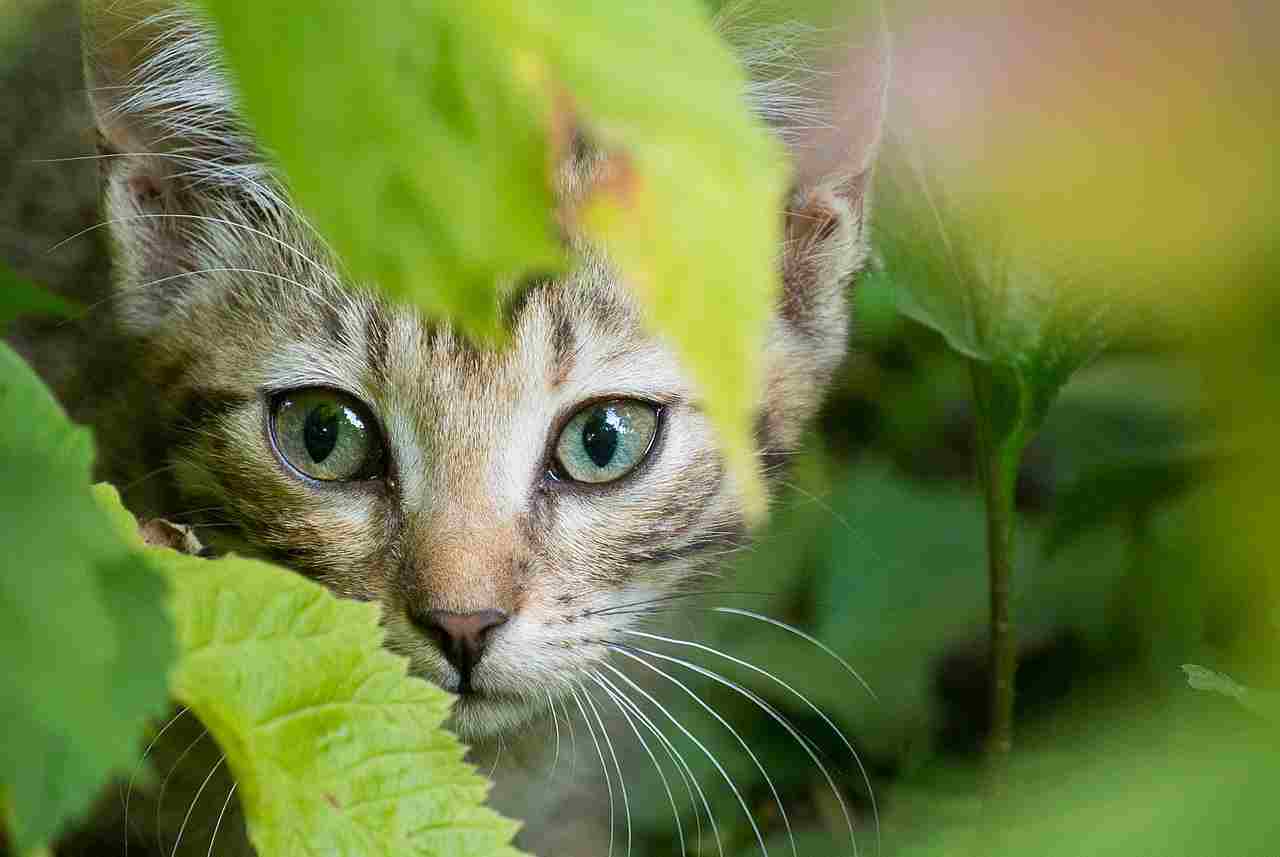
Possum:
Caution advised when approaching possums to avoid stress and potential defensive reactions.
Proper waste disposal to prevent attracting them to human areas.
Cat:
Approach unfamiliar cats cautiously to avoid defensive behavior.
Responsible pet ownership, including spaying/neutering and preventing outdoor cats from negatively impacting local wildlife.
Comparison:
Similar precautions apply for both species, emphasizing responsible behavior and coexistence.
Ecological Implications:
Responsible interactions and precautions contribute to maintaining a balance between wildlife and human environments.
24. Conservation Status:
Possum:
Conservation status varies among possum species.
Some species may face threats, while others may be considered of least concern.
Cat:
Domestic cats are not typically considered under conservation status.
Feral cats, however, can pose a threat to local wildlife and ecosystems.
Comparison:
Conservation status varies more significantly among possum species, while the impact of feral cats on local ecosystems is a conservation concern.
Ecological Implications:
Conservation efforts may be directed towards protecting specific possum species and managing the impact of feral cats.
Summary of Comparison
Appearance:
Possums: Small to medium-sized with distinctive round eyes and pointed ears.
Cats: Variable sizes, sleek bodies, retractable claws.
Size:
Possums: 32 to 58 cm (12.6 to 22.8 in) excluding the tail.
Cats: Varies widely, typically 46 to 61 cm (18 to 24 in).
Weight:
Possums: 1.2 to 4.5 kg (2.6 to 9.9 lb).
Cats: 2 to 7 kg (4.4 to 15.4 lb) for domestic cats.
Bite Force (PSI):
Possums: Moderate, adapted for their diet.
Cats: Strong, around 230-250 PSI.
Physical Offensive Advantages:
Possums: Sharp claws and teeth.
Cats: Retractable claws, sharp teeth, and agility.
Physical Defensive Advantages:
Possums: Prehensile tail, playing dead.
Cats: Agility, speed, defensive postures.
Speed:
Possums: Not known for high speed.
Cats: Can reach 30 mph (48 km/h).
Agility:
Possums: Agile climbers with prehensile tails.
Cats: Highly agile with quick reflexes.
Senses:
Possums: Well-developed sense of smell and hearing.
Cats: Acute sight, smell, and hearing, exceptional night vision.
Overall Physical Capacity:
Possums: Tail for balance, well-suited for trees.
Cats: Versatile physique, strong legs, and retractable claws.
Habitat Preference(s):
Possums: Arboreal habitats.
Cats: Adaptable to various environments, including urban areas.
Tracks:
Possums: Five toes on both front and hind feet.
Cats: Four toes on both front and hind feet, claws may be visible.
Lifespan:
Possums: 6 to 12 years.
Cats: 12 to 15 years for domestic cats.
Mode of Feeding:
Possums: Herbivores, primarily folivores.
Cats: Carnivores, obligate carnivores for domestic cats.
Intelligence:
Possums: Problem-solving skills.
Cats: Highly intelligent, including social intelligence.
Social Behavior:
Possums: Generally solitary, limited social interactions.
Cats: Can display both solitary and social behaviors.
Mode of Reproduction:
Possums: Marsupials with a short gestation period.
Cats: Mammals with a longer gestation period.
Parental Behavior:
Possums: Maternal care, especially in the pouch phase.
Cats: Maternal care, more extended parental involvement.
Proximity to Human-Inhabited Areas:
Possums: May venture into gardens.
Cats: Frequently found in urban areas.
Behavior Toward Humans:
Possums: Generally shy.
Cats: Varied, from affectionate to independent.
Danger Posed to Humans:
Possums: Not considered dangerous.
Cats: Not inherently dangerous, potential for scratches or bites.
Associated Precautions:
Similar precautions for both, emphasizing responsible behavior.
Conservation Status:
Possums: Varies among species.
Cats: Domestic not under conservation status, feral cats a concern.
Conclusion:
I) Similarities:
Both possums and cats exhibit adaptive behaviors for survival in various environments.
Both contribute to ecological balance through their roles in food chains.
II) Differences:
Fundamental differences in biology, such as reproductive strategies (marsupials vs. traditional mammals) and dietary preferences (herbivores vs. obligate carnivores).
Varied ecological implications, with possums more specialized in certain habitats and cats exhibiting adaptability to diverse environments.
